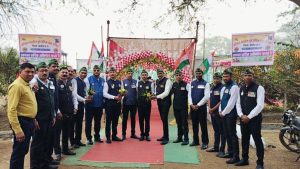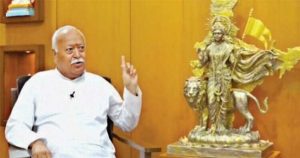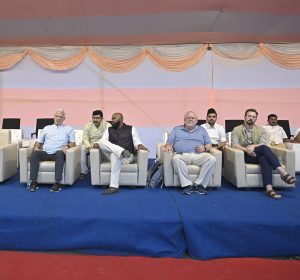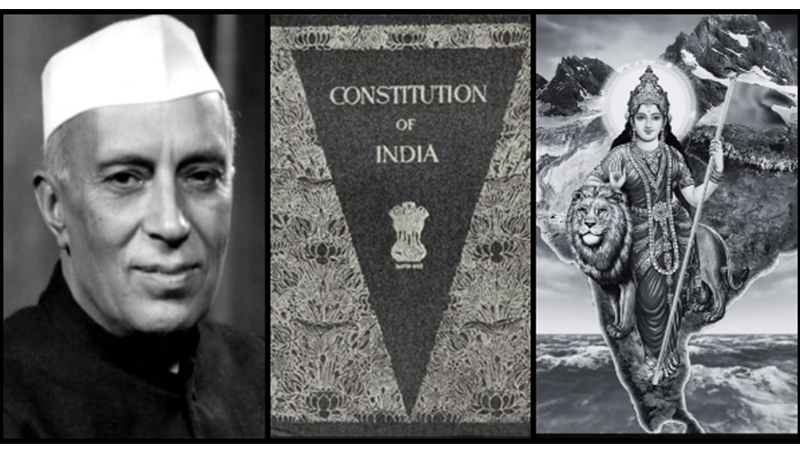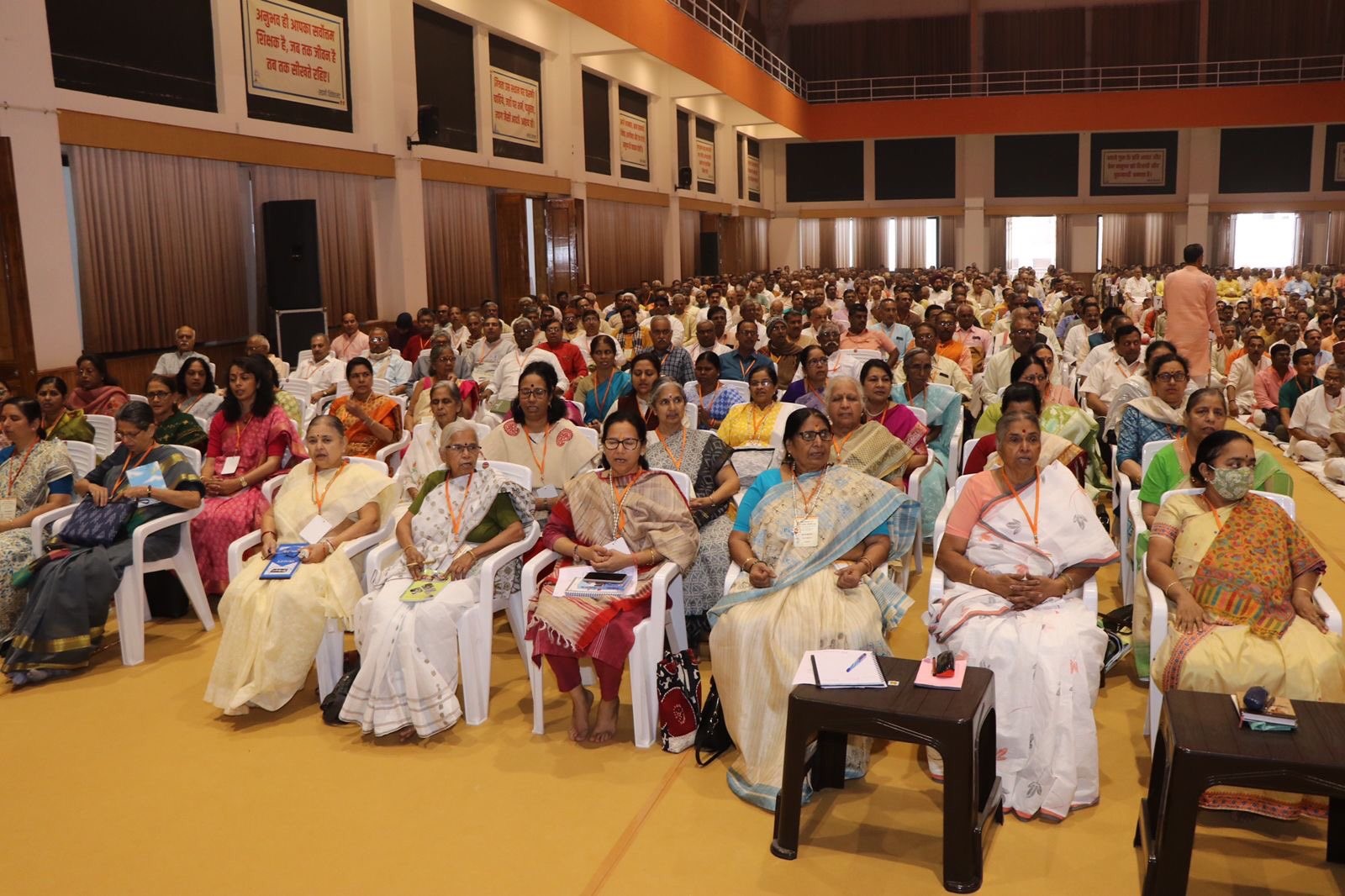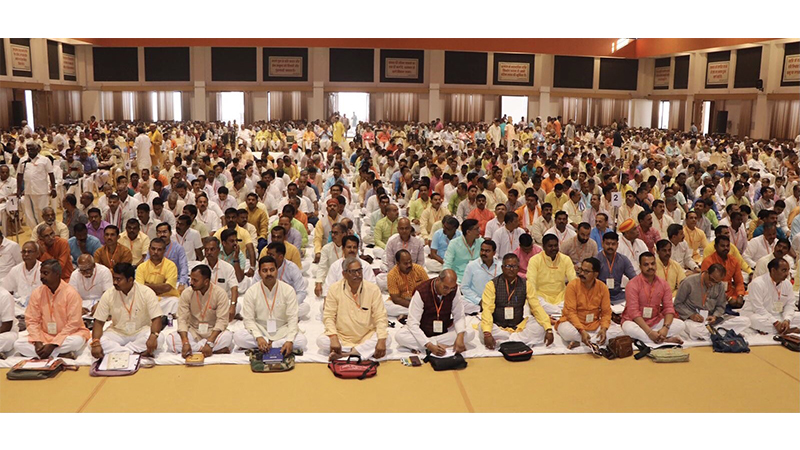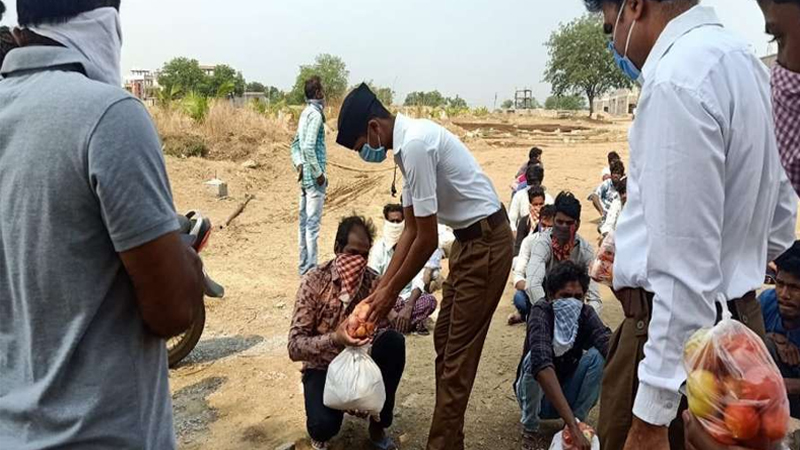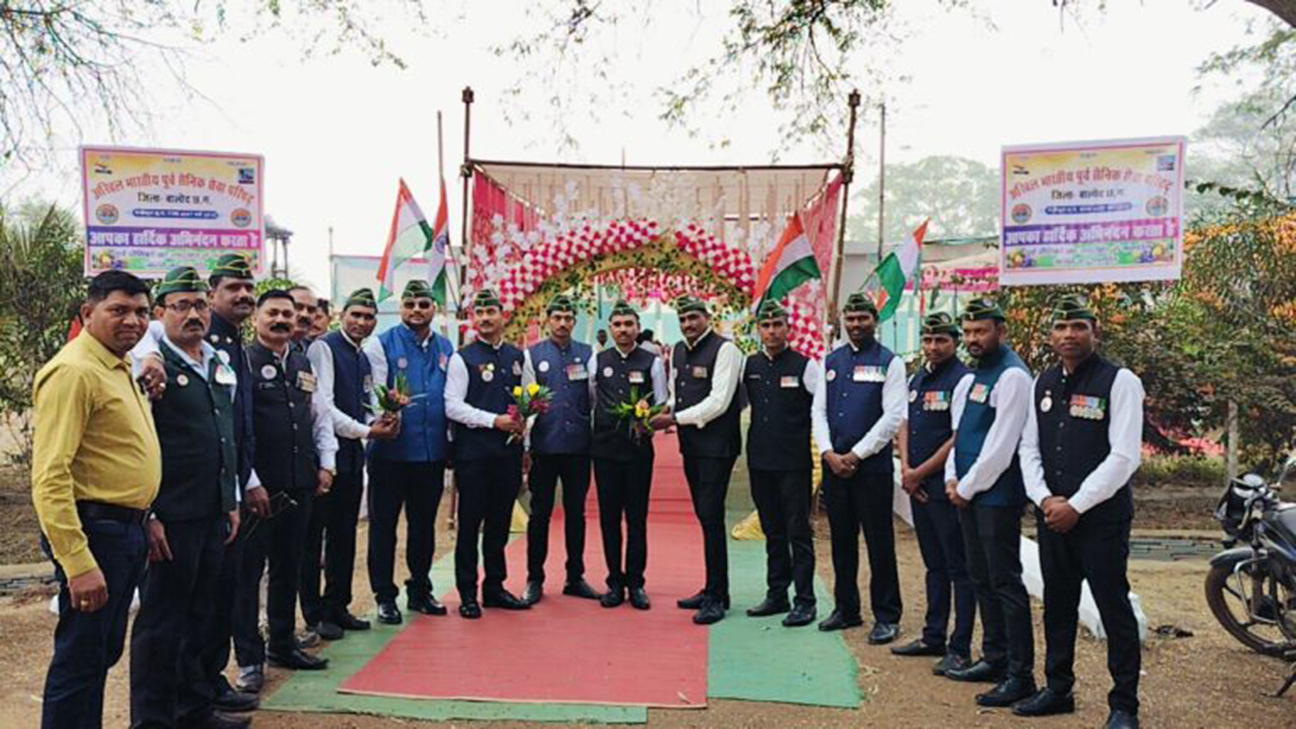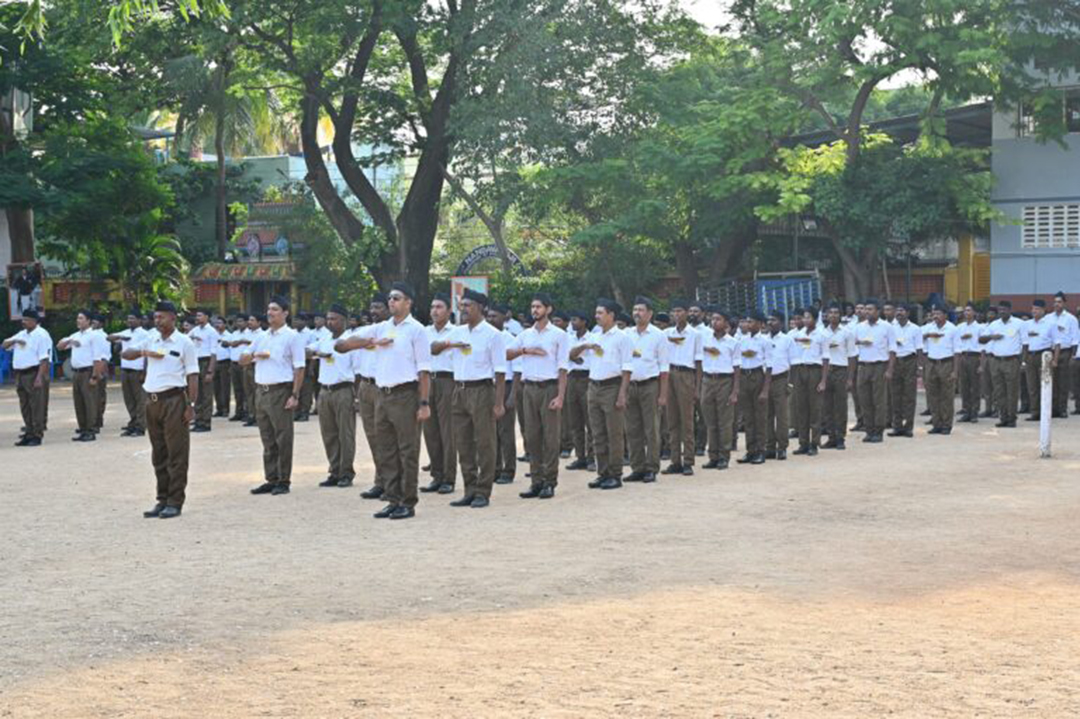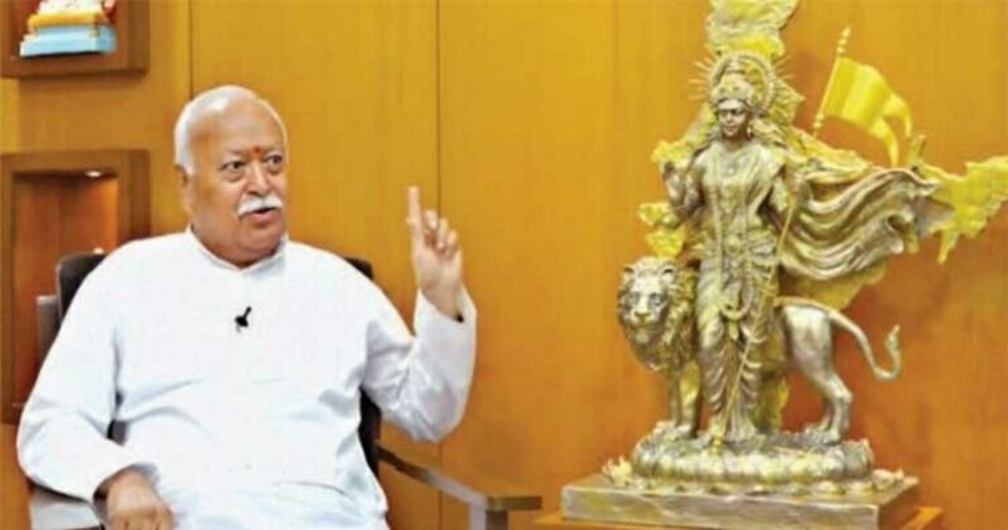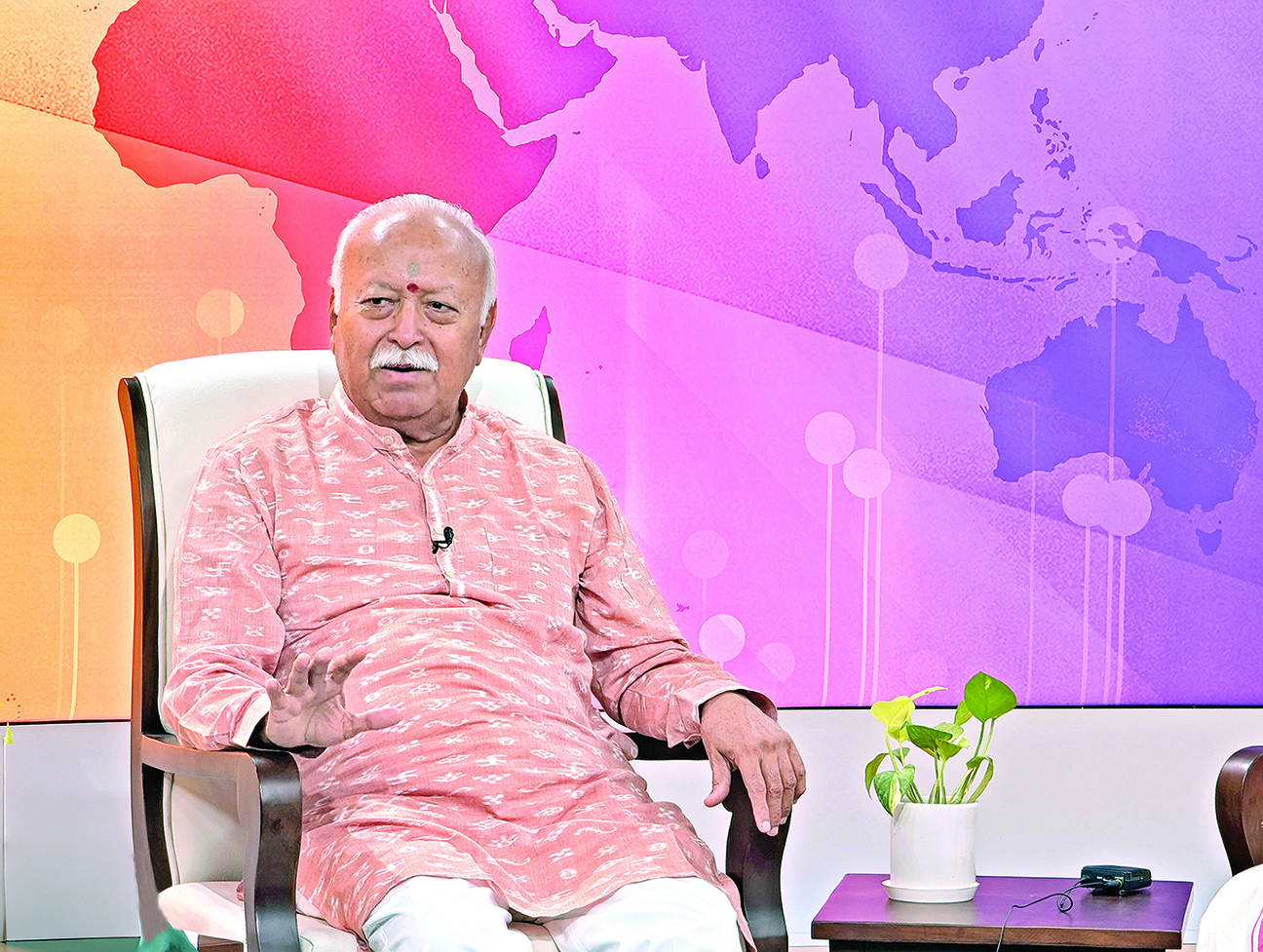US University’s Factsheet on RSS Got its ‘Facts’ Wrong
Updated: April 3, 2023 11:45

Over the last couple of years, there has been a concerted effort to malign the image of the world’s largest voluntary organisation Rashtriya Swayamsevak Sangh (RSS) and Hindutva in the Western academia and public discourse. A number of digital platforms have sprung up targeting the RSS and all things related to Hindus. They are not only vitriolic but make assertions based on the wrong facts. The unfortunate part is that Western academia often succumbs to this anti-RSS propaganda without getting the facts checked. In fact, a whole industry has sprung up whose full-time occupation is to spread ‘anti-RSS’ and ‘anti-Hindu’ propaganda and it is thriving on this. This creates confusion among the younger generation of the Indian diaspora also, who often get influenced by this false narrative, and hence start questioning the credentials of the Hindu thought and Hindu philosophy. In this multi-part series, we will take a look at the discourse on RSS and Hindutva in the Western world and check out how much of it is based on facts and how much of it is propaganda. This is the first part of the series.
The US-based Georgetown University has published a factsheet on the RSS as a part of its Islamophobia project under a programme called ‘Bridge Initiative.’ The factsheet is full of factual errors and unnecessarily portrays an extremely negative image of the RSS. Let’s take a look at some of the key errors.
Georgetown University fact sheet: “The RSS is…paramilitary volunteer organisation.”
Real facts: The RSS is a socio-cultural organisation. No arms training is given in the RSS. In fact, the RSS is known for its ‘social service’ projects. More than two lakh welfare projects are run by the organisation’s volunteers. Also, under Indian law, it is not allowed to run a paramilitary organisation. The RSS volunteers are very disciplined. Their level of discipline and confidence in their senior functionaries is unmatched in the realm of civil society world. That is why, many commentators tend to term it as a paramilitary organisation, which is factually incorrect.
Georgetown University fact sheet: The RSS was founded in 1925 by KB Hedgewar in response to a series of small and large-scale riots between Hindus and Muslims across Northern India.
Real facts: The founder of the RSS, Dr KB Hedgewar, was an Indian revolutionary. At a younger age, he was part of Anushilan Samiti, a leading revolutionary organisation of Bengal, which was fighting against the British colonial rule. Dr Hedgewar realised that one of the key reasons that a handful of Britishers were able to colonise and subjugate a massive country like India was because there was no unity among Hindus. And by Hindu, he meant all those who live in India and consider it to be their motherland, they might be going to the mosque or Church or any other place of worship. Religion has always been a matter of personal faith for the RSS and all its leaders have always said this on the record. So Dr Hedgewar decided to set up an organisation which could unite Hindus. The RSS stand is clear in this regard, if some people have problems with the term ‘Hindu’, they may call themselves ‘Bharatiya’ (citizens of Bharat/India). The RSS was, thus, not set up as a reaction to the communal situation but with an objective to unite Indians and carry out social reforms amongst Hindus, so that the faultlines created in the Indian society would be rectified. The primary objective of the RSS was to help India attain its independence from British rule and then ensure that this independence remains intact as, in the past, Indians had lost their country to several invaders, primarily because the society was divided.
Georgetown University fact sheet: In 1940, M.S Golwalkar succeeded Hedgewar as head of the RSS. Golwalkar, widely regarded as the ideological architect of the Sangh, is the author of We, or, Our Nationhood Defined, which maps out a vision of a “Hindu Rashtra”. A March 2018 piece by Parnal Chirmuley in The Indian Express notes that Golwalkar’s vision [of a Hindu state] drew inspiration from Italian fascism, specifically Mussolini’s organisation of fascist paramilitary forces. In recent years, the RSS has been at the forefront of promoting Hindu nationalism in India, with the Sangh accused of inciting violence against India’s Dalit-Bahujan community, including hate crimes against Muslims, lynching of the Dalits, and pogroms against religious minorities.
Real facts: The ideological architect of the RSS was Dr KB Hedgewar. Five Sarsanghchalaks(Chief mentors who head the organisation) after that, including MS Golwalkar, the second RSS chief mentor, contributed towards the evolution of the RSS as an organisation. So the ideological foundation was laid by Dr Hedgewar and not Golwalkar as asserted in Georgetown University’s factsheet.
As far as Golwalkar is concerned, he has been deliberately misquoted from his book ‘We, or, Our Nationhood Defined’ and wrongfully called fascist. In the same breath, RSS is often called anti-Muslim or anti-Christian. Neither Golwalkar nor the RSS ever believed in the superiority of any race, caste or class.
To give you the correct perspective about what was Golwalkar’s thought process, we need to take a look at what he said in an interview in the early 1970s. J. Nandakumar, who is also the convenor of Prajna Pravah, an organisation of intellectuals, has quoted an interesting comment of Golwalkar (also known as Guruji), in his book ‘Hindutva for the changing times,’ Indus Scrolls Press, 2019.
“In an interview to Dr Saifuddin Jilani (published in early 1970s in weekly Organiser), Guruji says, “Indianisation does not mean converting all people to Hinduism. Let us all realise that we are the children of this soil and we must have allegiance to this land. We belong to the same society and our ancestors are common.” Nandakumar has written, “Understanding this is Indianisation in the real sense. Indianisation does not mean that one should be asked to quit his religious system. We neither said this, nor we are going to say so. Rather, we believe that a single religious system for the entire human society is not suitable.”
As far as RSS’ stand on the Dalits (socially extremely backward sections) is concerned, let us dive deeper into what the RSS has been doing on the ground and how some of the top leaders of India have acknowledged its contribution towards the upliftment of the socially backward sections of the society.
Due to its efforts to end caste-based discrimination, right since its inception in 1925, Mahatma Gandhi, one of the tallest leaders of India and the world in 20th century) was all praise for the RSS when he visited its camp in Wardha, Maharashtra, in 1934, and witnessed that all the volunteers were eating together. None of them were bothered about the caste of the swayamsevak(a volunteer is known as ‘swayamsevak’ in RSS) sitting next to him. Gandhi recalled this visit when he addressed an RSS meeting on September 16, 1947, in the sweepers’ colony in Delhi.
Harijan, a weekly newspaper published by Mahatma Gandhi, reported this event on September 28, 1947. The report read: “Gandhi ji said that he had visited the Rashtriya Swayamsevak Sangh camp years ago at Wardha when the founder Shri Hedgewar was alive. The late Shri Jamnalal Bajaj had taken him to the camp and he (Gandhi) had been very well impressed by their discipline, complete absence of untouchability and rigorous simplicity.”
One of the fiercest opponents of caste-based discrimination and the architect of the Indian Constitution, Dr BR Ambedkar, was also deeply impressed by the way RSS volunteers demonstrated equality for all castes through their behaviour. The first formal interaction of Ambedkar with the RSS took place in 1935. He had gone to Dapoli near Pune for some work where he visited an RSS shakha (a daily gathering of RSS volunteers at local level for an hour. Currently there are more than 60,000 such shakhas of the RSS across India). In 1939, he was invited to an RSS training camp in Pune. There he also met RSS founder Dr KB Hedgewar. There were more than 500 RSS volunteers at that camp when Dr Ambedkar reached there. He was quite impressed by the fact that there was no discrimination on the basis of caste. In June 1953, senior RSS functionaries Moropant Pingley and Balasaheb Sathey met Ambedkar in Aurangabad, Maharashtra, where the latter asked for detailed information about the outreach of the RSS.
Earlier, in 1948, when the Congress government at the Centre had banned RSS by falsely implicating it in the assassination of Mahatma Gandhi, Dr Ambedkar was in favour of lifting the ban. After it was lifted, the second sarsanghchalak of RSS, MS Golwalkar, went to Delhi in September 1949 to meet Ambedkar to express his gratitude for the help he had offered in lifting the ban.
It is ironic that while the detractors of the RSS have been targeting Golwalkar, trying to paint him as someone who believed in the Nazi idea of the superiority of races, it was none other than Golwalkar who led the setting up of Vishwa Hindu Parishad (VHP-it can be broadly translated as World Hindu Council) to end caste-based discrimination in all spheres of life. The VHP was founded in 1964 on the occasion of Janmashtami at Sandeepni Ashram in Mumbai in the presence of 40 leading lights of Bharatiya(Indian) society cutting across castes and religions. The VHP was set up after the RSS realised that caste discrimination is a major fault line of Hindu society. So it brought all the spiritual and religious heads under one umbrella and ensured that they issue the clarion call repeatedly since then to end the caste discrimination in the Hindu society. Earlier, the RSS inspired the setting up of Akhil Bharatiya Vanvasi Kalyan Ashram(ABVKA) in the early 1950s to work among Scheduled Tribes who had become the most marginalised sections of Indian society during the British rule.
The RSS, in recent times, has set up a full-fledged vertical called ‘Samajik Samrasta’. This can be broadly translated as a vertical for ‘social equality’. This vertical specifically works to end any kind of discrimination faced by the socially marginalised sections of society.
Millions of volunteers come together every day in over 60,000 RSS shakhas, irrespective of their caste, creed, religion, social or economic status. The volunteers address each other by their first name only. Their surnames which often indicate the caste in our society are not given any importance by anyone in the organisation. Every RSS shakha organises ‘Sahbhoj’ (community dinner) at regular intervals where every volunteer brings food from their home. All the food items are put together and everyone eats the same food.
The central axis of the RSS’ worldview on caste discrimination in Bharat is best depicted by a lecture delivered by the RSS’ third Sarsanghchalak, Balasaheb Deoras, at the Vasant Vyakhyanmala (Vasant lecture series) in Pune in 1974. This is the guiding framework for its efforts to eradicate social inequality.
Deoras said, “Untouchability is a… saddening and unfortunate aspect of our social inequality. Some thinkers opine that it was non-existent in the olden times, but at some stage, during the passage of time, it gatecrashed into our social system and took root. Whatever be its origin, all of us consider that untouchability is a terrible folly and it must, of necessity, be thrown out lock, stock and barrel. There are no two opinions about it. Abraham Lincoln, who abolished slavery in America, said, “If slavery is not wrong, then nothing is wrong.” Similarly, it is for all of us to declare, “If untouchability is not wrong, then nothing in the world is wrong!” Every one of us must, therefore, aim at eradicating social inequality in each and every form. We must clearly explain to the people at large how our society became weak and disorganised on account of social inequalities. We must also show them the way to get rid of them. It is necessary that every individual must make his or her contribution in this effort. That would remove a stumbling block in the way of Hindu Consolidation.”
The above-mentioned is just a small sample of the factual errors committed in the RSS fact sheet posted on Georgetown University’s website. Incidentally, the financial contribution to the ‘Bridge Initiative’, a programme under which this fact sheet was posted, had come from Saudi Arabia and the contributor was later arrested for fraud, money laundering and corruption.
